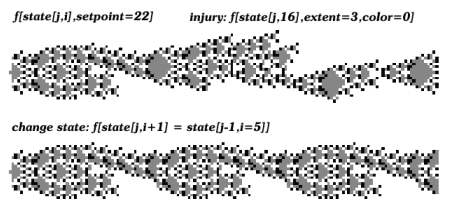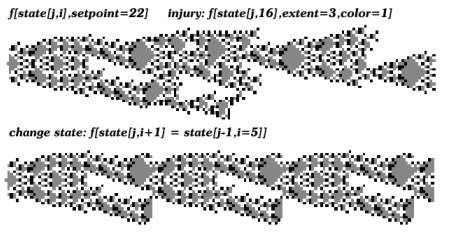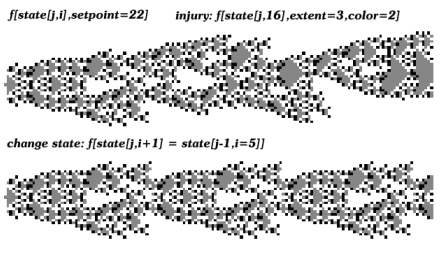 |
The
taming of Chaos
Chaos is a threat to life yet chaos
originates also novelty. According to Genesis:
“In the beginning of creation, when God made heaven and earth,
the earth was without form and void, with darkness over the face of
the abyss. . .”. The abyss was chaos which
served as an initial condition for life.
Life tames chaos, which will be illustrated
in the following experiment. The stem process CA-1 (not
displayed) plants a zygote,
and when it matures to CA-2 it injures it. Whenever CA-1 is at state
= 16, it changes the three rightmost cells (bits) of CA-2. “color”
indicates the nature of the change. In the first experiment injury replaces
damaged cells with 0 (white), in the second with 1 (gray) and in the
third with 2 (black).
 |
CA-2 oscillates chaotically and endangers the proliferon.
However the stem process has an efficient way to control chaos and
transform it into a solution. It applies the “change state”
transformation.
 |
Since CA-1 always transfers its state = 7 to CA-2, it recreates in subsequent cycles the structure of the first cycle of the injured CA-2.
 |
The same kind of taming is applied by the organism. However it is lax. The solutions are bounded, and attractors are strange. Like the waves of an E.E.G. Chrolnobiology which studies these oscillations claims that they are controlled by a central oscillator, which sets the pace of processes in the body. This naïve premise regards the organism as a machine or a computer. They attempt to impose on life a physical time, or chronos, while in reality life is driven by biological time.